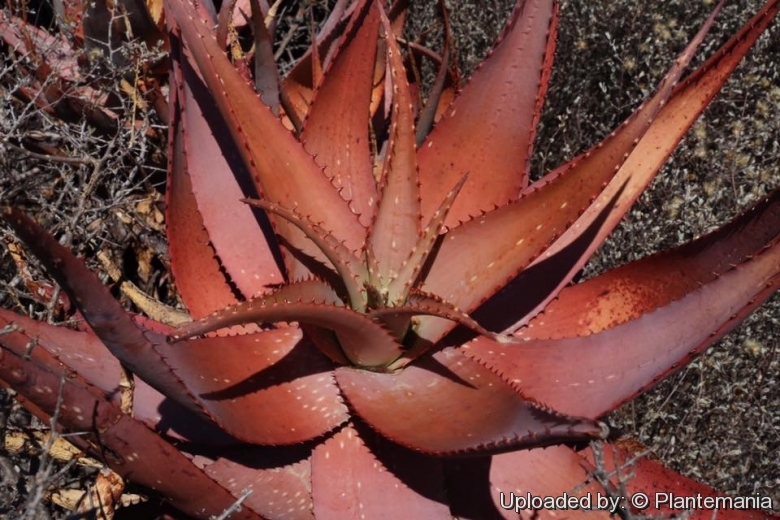
Aloe microstigma Photo by: © Plantemania
In habitat. The leaves start out horizontal along the ground and suddenly turn up to the sky so that the tip is vertical. Mature leaves are a solid brownish green.
Origin and Habitat: Southern Africa, where it is a common and widely distributed plant in the interior of the Western and Eastern Cape (Little Karoo, Noorsveld)
Habitat: Aloe microstigmaSN|639]]SN|639]] can be found in a variety of dry habitats comprising flat open areas, steep rocky slopes, or amongst bushes. Where they grow, they are near to invisible between rocks and dry bushes.
Ecology: Aloe microstigmaSN|639]]SN|639]] is pollinated primarily by sugar birds particularly the lesser double collard sugar bird which extracts the nectar produced by the flowers. Insects may also be responsible for pollination. Seeds are produced in abundance and this serves as a survival mechanism. Seeds are parasitized by small day flies that lay their eggs in the seeds, their larvae then live off the seeds. The success of germination is relatively high giving rise to the abundance of the species. The rosette of leaves helps to cool the plant in that the upper leaves provides shading for the lower ones. Another interesting adaptation is the inward folding of leaves during the hot summer months. This helps to protect the softer and younger leaves from extreme temperatures. Leaves unfold again in cool weather.
Synonyms:
See all synonyms of Aloe microstigma
back
Accepted name in llifle Database:Aloe microstigma Salm-DyckMonogr. Gen. Aloes & Mesemb. [Salm-Dyck] Sect. 26:fig 4 (fasc. 6:fig11) 1854Synonymy: 5
Accepted name in llifle Database:Aloe microstigma subs. framesii (L. Bolus) Glen & D.S.HardyFl. S. Africa 5(1: 1): 107 2000Synonymy: 3
back
Description: Aloe microstigma is a medium size and very attractive aloe that usually occur singularly or in small groups, up to 50 cm in diameter and 60-70 cm tall. The leaves of this aloe are protected from the intense summer sun by anthocyanin pigments that give them a dull red glow.
Stem: Young plants are stemless, while the older ones develop a short decumbent stem up to 50 cm tall and 10 cm wide, which is usually covered with remains of old leaves .
Leaves: Up to 40 cm long and 7.5 cm wide, lanceolated to deltoid arranged in spiralled rosettes (, but in juvenile plants they are ranked in vertical rows). Conspicuously scattered with white spots on the upper and lower surface, which contrast well with the reddish-brown teeth along the margins. Teeth non pungent 2-4 mm long, 5-10 mm apart. The leaves start out horizontal along the ground and suddenly turn up to the sky so that the tip is vertical. Mature leaves are a solid brownish green, the young growing leaves are tender light green and have many fine white dots, but in full sun, may get yellowy and sunburned. In shade has a more turquoise colouration. In winter, leaves can become incredibly colourful showing pinks, purples, yellows and greens and in general turn reddish brown if suffering from environmental stress.
Flowers: This species shows a variety of flower colours ranging from yellow to red with all the colour possibilities in between. They typically are red until they are open, and then turn pure yellow. In some plant, however, the buds and open flowers may be uniformly red or yellow. The robust simple raceme (stem on which all flowers are borne) are conical to cylindrical-accumulative 90-100 cm long, coming out (usually) 1-3 at a time.
Blooming season: Flowers profusely from late autumn until January.
Seeds: Small, black to 2 mm in diameter, inconspicuously winged and wind dispersed.
Subspecies, varieties, forms and cultivars of plants belonging to the Aloe microstigma group
 Aloe khamiesensis Pillans: Plants are erect and up to 3 m tall, usually single-stemmed with only one rosette. Distribution: Khamieskroon in Kamiesberg mountains and elsewhere in Namaqualand.
Aloe khamiesensis Pillans: Plants are erect and up to 3 m tall, usually single-stemmed with only one rosette. Distribution: Khamieskroon in Kamiesberg mountains and elsewhere in Namaqualand. Aloe microstigma Salm-Dyck: occur singularly or in small groups, up to 50 cm in diameter and 60-70 cm tall. Distribution: Western and Eastern Cape (Little Karoo, Noorsveld)
Aloe microstigma Salm-Dyck: occur singularly or in small groups, up to 50 cm in diameter and 60-70 cm tall. Distribution: Western and Eastern Cape (Little Karoo, Noorsveld)
Bibliography: Major references and further lectures
1) Stuart Max Walters “The European Garden Flora: Pteridophyta, Gymbospermae, Angiospermae-Monocotyledons” Cambridge University Press, 1984
2) Urs Eggli “Illustrated Handbook of Succulent Plants: Monocotyledons” Springer, 2001
3) John Robert Brown “Unusual plants: 110 spectacular photographs of succulents” Abbey Garden Press, 1954
4) Pauline Bohnen “Flowering plants of the Southern Cape” Still Bay Trust, 1986
5) John C. Manning, Colin Patterson-Jones “Jewels of the Veld” Struik, 2004
6) John (John C.) Manning “Field guide to fynbos” Struik, 2007
7) Hans Bornman, David S. Hardy “Aloes of the South African veld” Voortrekkerpers, 1971
8) Sean Hogan, Timber Press (Portland, Or.) “Flora: a gardener's encyclopedia” Vol. 1 Timber Press, 2003
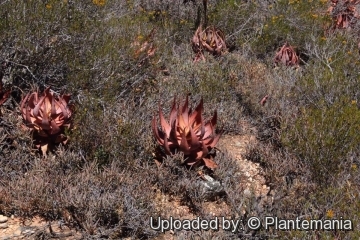 Aloe microstigma in habitat. Photo by: © Plantemania
Aloe microstigma in habitat. Photo by: © Plantemania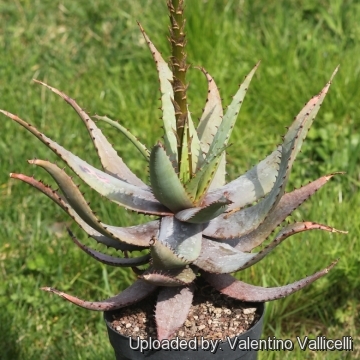 Aloe microstigma Photo by: Valentino Vallicelli
Aloe microstigma Photo by: Valentino Vallicelli Aloe microstigma Photo by: Valentino Vallicelli
Aloe microstigma Photo by: Valentino Vallicelli Aloe microstigma Photo by: Valentino Vallicelli
Aloe microstigma Photo by: Valentino Vallicelli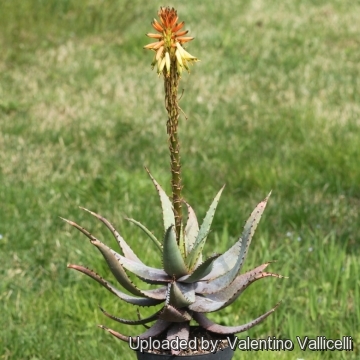 Aloe microstigma Photo by: Valentino Vallicelli
Aloe microstigma Photo by: Valentino Vallicelli Aloe microstigma Photo by: Valentino Vallicelli
Aloe microstigma Photo by: Valentino Vallicelli Aloe microstigma Photo by: Valentino Vallicelli
Aloe microstigma Photo by: Valentino Vallicelli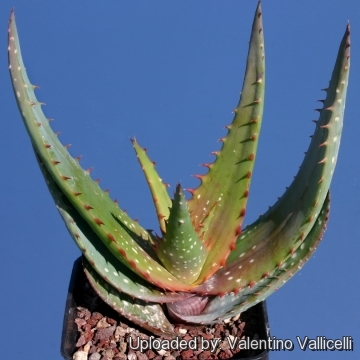 - Leaves have subtle white flecking. In winter, they can become incredibly colourful showing pinks, purples, yellows and greens. Each season has a distinct attractiveness it is a very beautiful aloe! Photo by: Valentino Vallicelli
- Leaves have subtle white flecking. In winter, they can become incredibly colourful showing pinks, purples, yellows and greens. Each season has a distinct attractiveness it is a very beautiful aloe! Photo by: Valentino VallicelliCultivation and Propagation: Easy to grow, requiring very little care. It can be grown in large containers.
Growing rate: It grow slowly, but not agonisingly so being able to increase is height by 10-20 (or more) cm per year under favourable conditions.
Potting medium: Always use a good quality, loamy sandy soil with plenty of drainage chips at the bottom of containers.
Fertilization: The plants are fertilized only once during the growing season with a balanced fertilizer diluted to ½ the recommended strength.
Watering: It tolerates weekly watering in the summer; once a month, or not at all in the colder months of December and January. Can withstand long periods of drought, but it will thrive and flower more profusely if watered in the correct season.
Exposition: The plant needs full sun to light shade, with some sun exposure the leaf develops a nice reddish tint and remains compact.
Hardiness: It can take a few degrees of frost in winter as well, but prefers hot summers. It grows much better outdoors in spring and summer. In mild climates it can be cultivated outdoors for use in landscaping, preferably planting it in hot and dry rock gardens. It will grow best in regions with a climate close to that of its native deserts not too cold, and not too wet.
Pest and diseases: Incorrect watering, poor drainage or too much shade can lead to attack by pests and diseases.
Gardening: This aloe can be grown in large, rocky, well-drained soil in gardens in drier areas. It is very drought resistant but susceptible to frost. They make particularly nice low maintenance garden plants which are especially attractive when in flower in the barren winter months.
Medicine: Aloe microstigma is not recorded as a medicinal plant but it is said that the bitter sap has healing properties in cases of cuts and burn wounds.
Propagation: Almost exclusively by seeds planted in autumn, in trays of coarse river sand. Branches (if available) can also be detached for propagation. cuttings must be dried out for at least 1 week before planting in river sand. This is quite a difficult alternative and success is not always guaranteed.
Your Photos
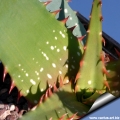
by Cactus Art
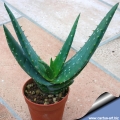
by Cactus Art
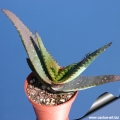
by Cactus Art
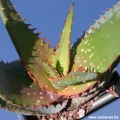
by Cactus Art






















